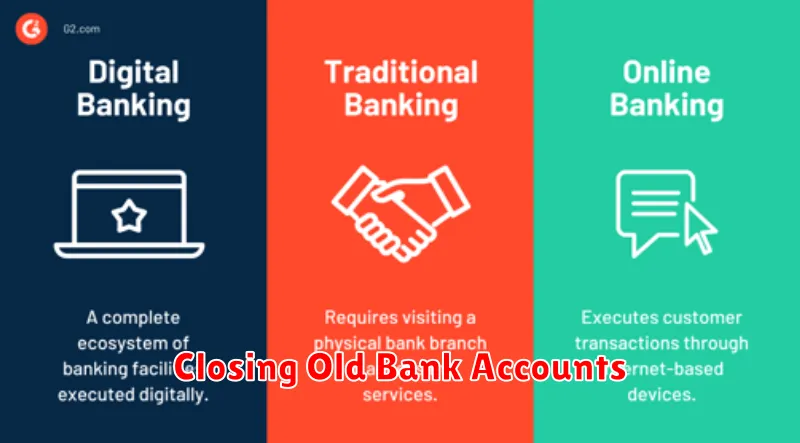In today’s fast-paced world, the shift from traditional banking to digital banking is no longer a trend, but a necessity. This guide explores the compelling reasons to make the switch and provides a practical roadmap to navigate the transition seamlessly. Learn how digital banking offers unparalleled convenience, security, and control over your finances, enabling you to manage your money efficiently and effectively. Whether you’re seeking 24/7 access to your accounts, lower fees, or innovative financial tools, understanding how to transition to digital banking is crucial for staying ahead in the modern financial landscape. Discover the advantages of features like online bill pay, mobile check deposit, and real-time transaction alerts that empower you to take charge of your financial well-being.
Switching from traditional banking to digital banking can seem daunting, but this comprehensive guide breaks down the process into simple, manageable steps. Explore the different types of digital banking platforms available, from online banks to mobile banking apps, and learn how to choose the best option to suit your individual needs. We’ll address key concerns about security and provide practical tips for a secure transition. This article will equip you with the knowledge and resources to confidently embrace the future of finance and harness the power of digital banking to achieve your financial goals. From opening a digital bank account to managing your digital finances effectively, this guide will empower you to navigate the digital banking world with ease and confidence.
Why Switch to Digital Banking
Digital banking offers numerous advantages over traditional banking. Convenience is a key factor. Access your accounts 24/7 from anywhere with an internet connection, eliminating trips to a physical branch.
Speed and efficiency are also significantly improved. Transactions like transfers and bill payments can be completed in seconds, rather than days. Real-time notifications keep you informed of account activity, enhancing security.
Many digital banks offer lower fees than traditional institutions, as they have lower overhead costs. Some even offer higher interest rates on savings accounts. This makes digital banking a cost-effective choice.
Finally, digital banking offers a seamless and integrated experience. Manage your finances, investments, and budgeting all in one place. This provides a holistic view of your financial health.
Choosing the Right Platform

Once you’ve decided to embrace digital banking, the next crucial step is selecting the right platform. This decision requires careful consideration of your individual financial needs and priorities.
Security should be your top priority. Look for platforms with robust security measures such as multi-factor authentication, encryption, and fraud monitoring. Research the bank’s security track record and ensure they adhere to industry best practices.
Features are another key consideration. Think about what you need from a digital banking platform. Do you require bill pay, mobile check deposit, budgeting tools, or investment options? Make a list of essential features and compare different platforms to find the best fit.
Fees are an important factor. While many digital banks offer free services, some may charge monthly maintenance fees, overdraft fees, or ATM fees. Carefully review the fee schedule before making a decision.
Customer service is crucial, especially when encountering technical issues or needing assistance. Look for platforms with readily available customer support via phone, email, or chat. Read reviews to gauge the responsiveness and helpfulness of their customer service team.
Transferring Funds Safely
Security is paramount when transferring funds digitally. Always verify the recipient’s information to avoid sending money to the wrong account. Double-check the account number and name before confirming any transaction.
Use strong passwords and change them regularly. Avoid using easily guessable information like birthdates or pet names. Enable two-factor authentication (2FA) whenever possible for an added layer of security. This requires a second verification method, such as a code sent to your phone, in addition to your password.
Be wary of phishing scams. Legitimate banks will never ask for your login credentials or sensitive information via email or text message. If you receive a suspicious communication, contact your bank directly through official channels.
Monitor your accounts regularly. Check your transaction history frequently for any unauthorized activity. Report any discrepancies to your bank immediately.
Updating Direct Deposits and Bills
Once your digital banking account is set up, transitioning your direct deposits and bill payments is a crucial step. Begin by identifying all incoming direct deposits, such as paychecks or government benefits. Contact the paying institution (e.g., your employer, Social Security Administration) and provide them with your new digital account information. This usually involves supplying your new account number and routing number. Ensure accuracy when providing these details to avoid delays or misdirected funds.
Similarly, update your bill payments to debit from your new digital account. Many companies allow you to manage these payments online through their websites. Look for a “payment methods” or “account settings” section. You’ll likely need to input your new account and routing number here as well. For bills paid via automatic drafts, contact the biller directly to provide your updated banking information.
It’s recommended to keep a small balance in your traditional account for a short period after the switch, just in case any stray deposits or withdrawals occur. Once you’re confident everything is transitioned smoothly, you can close your traditional account.
Closing Old Bank Accounts

Once you’ve successfully transitioned to digital banking and verified all transactions are processing correctly, it’s crucial to close your old bank accounts. This prevents potential fees and simplifies your finances.
Before closing, ensure all automatic payments and deposits are redirected to your new digital account. Review your final statement from the traditional bank to confirm no outstanding transactions remain.
Contact your former bank to initiate the closing process. They may require a written request or an in-person visit. Request confirmation of the account closure in writing. Maintain records of the closure for your files.
Getting Used to App Interfaces
One of the biggest adjustments when switching to digital banking is navigating the app interface. Familiarity with the layout and features is key to a smooth transition.
Most banking apps offer similar core functions: account balance checks, fund transfers, bill payments, and mobile check deposits. However, the organization and presentation of these functions can vary significantly between institutions. Spend time exploring the app’s various sections and menus.
Look for tutorials or FAQs provided within the app. Many banks include helpful guides and onboarding resources to familiarize new users with their platform.
Don’t hesitate to contact customer support if you encounter difficulties or have questions about the app’s functionality. They are equipped to assist with navigation and troubleshooting.

